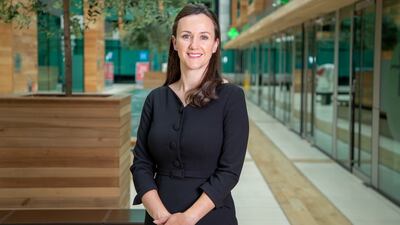About one in 50 people in Ireland suffer from fibromyalgia, yet the cause of this chronic pain condition remains somewhat of a mystery to medical experts.
"It's a big broad condition with a mixture of symptoms that can be very daunting for patients," says Dr Deborah Galvin, a consultant anaesthetist and pain physician at the Beacon Hospital and Blackrock Clinic in Dublin.
She explains that because there is no diagnostic test for fibromyalgia, the condition is diagnosed based on the patient’s history and the exclusion of other disorders. “The most common symptom is widespread pain all over the body with muscle aches and flare-ups of pain,” says Dr Galvin.
Patients will often say they feel very tired and lethargic, which doesn’t always improve following periods of sleep. “Symptoms of anxiety and depression can overlap with fibromyalgia and it can also be associated with irritable bowel syndrome,” she says. “The biggest issue for some patients is that because people can’t see their pain, they don’t feel believed or listened to. Someone might say ‘but you look fine’ when the person is having one of their worst days.”

Dr Paul Murphy, clinical lead for pain medicine at St Vincent's University Hospital, Dublin, says that we are not designed to have persistent pain so when we do, our nervous system is over stimulated. "Pain is [usually] a warning sign, but when someone has persistent pain, it switches on other nervous system pathways which disturb sleep, cause anxiety and disturb mood," he explains. The International Association for the Study of Pain defines pain as "an unpleasant sensory and emotional disorder associated with or resembling that associated with actual or potential tissue damage".
Diagnosis
Dr Murphy says fibromyalgia used to be diagnosed solely based on pain and tenderness. “To be diagnosed with fibromyalgia, the patient had to experience tenderness or pain at 11 out of 18 points throughout the body, but now the American College of Rheumatology defines it as a syndrome with cognitive impairments, anxiety/depression, sleep disturbances and impairment of daily living as well as musculoskeletal pain and tenderness,” explains Dr Murphy.
Fibromyalgia is five times more common in women than in men and the age of onset is usually between 35 and 50 when family and work commitments can be at their height. Lady Gaga and Sinéad O'Connor are among those who have spoken publicly about the personal toll of dealing with fibromyalgia.

“Some studies have shown biochemical abnormalities and increased activity in certain neurotransmitter but nothing is conclusive and the exact cause is unknown,” says Dr Galvin. Anecdotal evidence from women taking hormone replacement therapy has found that while it can help anxiety and depression, it does not lessen the pain symptoms.
“Patients find it very frustrating when they can’t link their symptoms to some cause and yet the pain can be overwhelming. The problem is that we don’t know what’s driving the pain,” says Dr Galvin who says that pain medication is generally not appropriate in the treatment of fibromyalgia because the side effects outweigh the benefits.
“Low doses of tricyclic antidepressants can help the depression and anxiety while giving some relief to the neuropathic pain,” she adds. Other medicines which dampen down hyperactivity in the nervous system are also sometimes prescribed to treat fibromyalgia.
Best approach
The current best approach to care within the medical model is for the patient to be treated by a multidisciplinary team including a physiotherapist, a dietician and a psychologist. “Regular daily exercise is good for both physical and mental health and depending on what a patient can tolerate, I’d advise 20-30 minutes walk a day and a weekly pilates or yoga class,” says Dr Galvin.
St Vincent’s University Hospital multidisciplinary approach to treating chronic pain has introduced Tai Chi classes led by a physiotherapist for some patients. “Aerobic exercises greatly benefits fibromyalgia but some people find it extremely difficult to engage with exercises. They can become fearful of activity that worsens their pain. We have to explain how pain isn’t always equal to damage,” explains Dr Murphy.

He says that research has found Tai Chi to be an alternative therapeutic option for those adverse to aerobic exercises. One study in the British Medical Journal found Tai Chi to be as good if not better than aerobic exercise for people with chronic pain. “The study found participants pain and fatigue decreased. They felt better at work and their wellbeing improved from twice weekly Tai Chi classes,” he explains. The slow deliberate movements of Tai Chi combined with concentration and mindfulness elements had a positive impact on both physical and emotional aspects of pain.
Participants on the three-week pain management programme at St Vincent's University Hospital also find comfort in the group dynamic established between the 10 people on the programme at any one time and often support groups are formed which continue after the programme has finished. Chronic Pain Ireland is a support group for people with chronic pain conditions including fibromyalgia.










